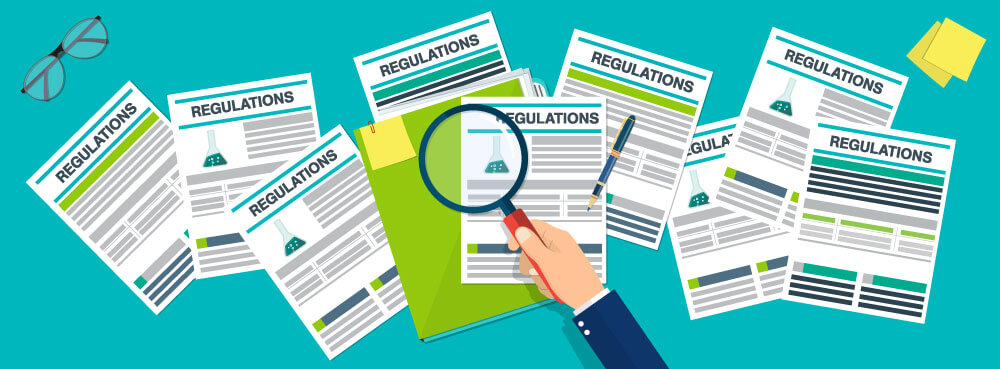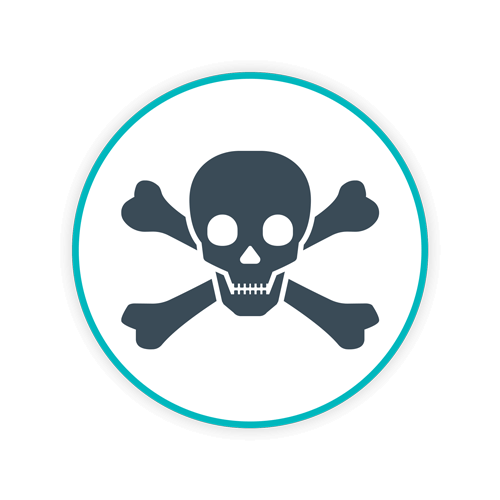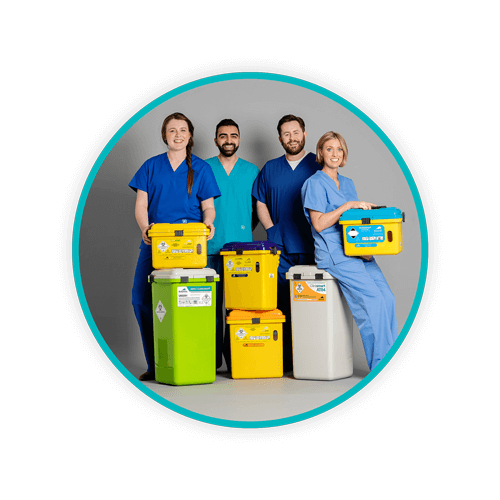A Change to POPs Regulations: Everything You Need to Know

As of January 1st 2023, new guidance and regulations have been established that restrict the storage and disposal of waste containing Persistent Organic Pollutants (POPs).
This new legislation from the Environment Agency states that items containing POPs cannot be safely disposed of in general waste or in landfill sites. This now means that all items containing POPs should be treated as a separate waste stream and sent for incineration.
TOPICS WE WILL COVER:
1 / What are Persistent Organic Pollutants (POPs)?
3 / How to know if your waste contains POPs
4 / The safe disposal of waste containing POPs
5 / Penalties for non-compliance

What are Persistent Organic Pollutants (POPs)?
POPs are toxic chemical substances that persist for long periods of time and can become widely distributed geographically if not disposed of properly; POPs pose a danger to the environment, wildlife, and human health.
Where Can POPs Be Found?
The Environment Agency conducted an investigation which revealed the presence of POPs and other hazardous chemicals in the foam of upholstered seating, resulting in the regulation regarding waste management placing a focus on upholstered domestic seating. Additionally, POPs can also be present in waste electrical and electronic equipment.
Domestic seating items that may contain POPs:
- Sofas
- Sofa beds
- Armchairs
- Kitchen and dining room chairs
- Stools and footstools
- Home office chairs
- Futons
- Bean bags, floor and sofa cushions
This includes any part made of or containing leather, synthetic leather, other fabric, or foam.
Domestic seating unlikely to contain POPs:
- Items that are not upholstered, without cushions
- Deckchairs
- Waste from manufacturing new domestic seating (with evidence of no POPs)
Note: Mattresses, curtains, blinds and beds are not considered domestic seating and are not part of this guidance.
Waste electrical and electronic equipment (WEEE) that may contain POPs:
- Office equipment (e.g. photocopiers, printers)
- Printed circuit boards
- Cables and granulated cable plastics
- Plastic cases from display devices (e.g. flat panel displays, cathode ray tubes)
How to Know if Your Waste Contains POPS

Whilst it’s unlikely that the majority of the waste items produced in your organisation contain POPs, you must demonstrate that it doesn’t. This can be done either by chemically testing or using X-Ray Fluorescence (XRF) scanning for bromine in the foam and rear of leather, synthetic leather, or other fabric covers.
Alternative methods such as Material Safety Data Sheets (MSDS) or import documentation showing that the soft furnishing waste doesn’t contain POPs can be used to show that items don’t contain POPs. By 2012, UK manufacturers stopped using POPs, however, imported goods continued to contain POPs up until 2019. If you know when an item was manufactured it will help to prove if it contains POPs.
The Safe Disposal of Waste Containing POPs
For the safe disposal of waste containing POPs, there must be separate storage and a separate collection of the waste; carried out by a person or company authorised to dispose of hazardous waste. All items containing POPs must be disposed of by incineration at a site designed and operated in a way that minimises the risk of the release of POPs into the environment.
Correct storage and transport of waste containing POPs
Extra storage space will be required in order for you to separate POPs waste while further clarity on disposal outlets can be sought for these items. POPs waste must not be mixed with other waste before or during separation. When transporting waste containing POPs, compliance with the regulations on the transport of waste and hazardous goods must be adhered to and the transport must be carried out by a person or company authorised to transport hazardous waste.
Penalties for Non-Compliance
As with other types of hazardous waste, failing to comply with the regulations on waste containing POPs can result in penalties including fines and criminal charges. There are also other consequences of non-compliance such as the harmful effects these substances can have on human health, wildlife, and the environment.
How to Ensure Compliance
To ensure compliance, relevant stakeholders within the NHS such as Estates and Facilities Managers and Waste Managers will need to ensure they’re up to date with the latest regulations.
The correct training must also be provided to anyone dealing with healthcare waste, from its generation to its storage, transport and disposal. For more information or clarification on these changes in POPs waste regulations, reach out to one of our knowledgeable waste consultants. We offer a full range of healthcare waste services, including the transportation and disposal of hazardous waste, as well as training and educational materials to help your staff understand the best practices in healthcare waste management.
Let's Talk!
Your time is valuable, and we don’t want to play hard to get. You can either phone us directly on the details listed on our contact page, or feel free to fill out this short form and one of our team members will get back to you as quickly as possible.
